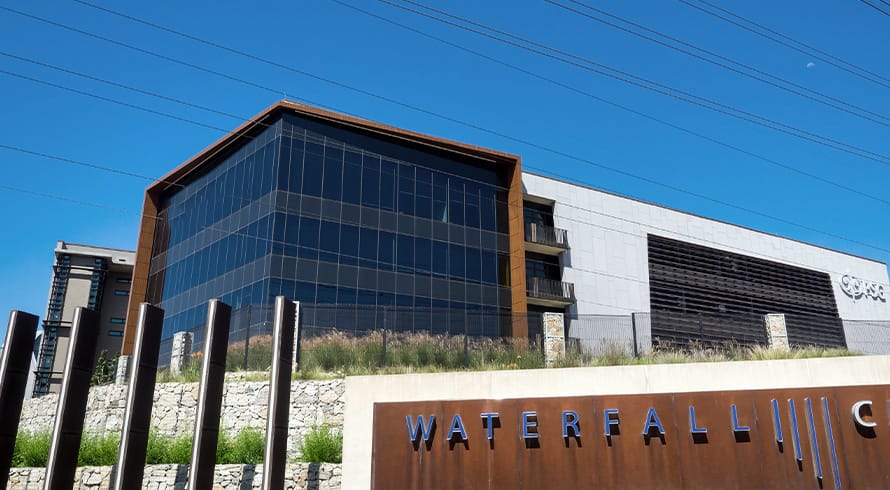Proposed overhaul of mining sector’s financial provisioning regulations: Third time’s the charm?
At a glance
- The Minister of Forestry, Fisheries, and the Environment has published new draft financial provisioning regulations to replace the heavily criticized 2015 Financial Provisioning Regulations.
- The proposed changes include narrowing the definition of an "applicant" and "holder," limiting the scope of application, and introducing clearer liability provisions for environmental damage.
- The draft regulations also address financial vehicles for setting aside financial provision, extended timeframes for compliance, and the requirement for a public participation process. However, the timing for finalizing these regulations remains uncertain.
The 2021 Draft FP Regulations are the third iteration aimed at replacing the 2015 FP Regulations, which have been subject to numerous compliance extensions and proposed overhauls, as set out in this previous alert. Most recently, the date for compliance for existing mineral rights holders with the 2015 FP Regulations was extended for the fourth time to 19 June 2022.
In comparing the 2021 Draft FP Regulations to the previous set of draft regulations published in May 2019 (2019 Draft FP Regulations), several noteworth changes are being proposed, some of which are discussed below.
One of these changes is limiting the scope of application of the 2021 Draft FP Regulations by introducing a narrower definition of an “applicant”, which was previously proposed to be significantly widened to include applicants for renewal of mineral rights; consents in terms of section 11 of the Mineral and Petroleum Resources Development Act 28 of 2002 (MPRDA); and any variation or amendment in terms of section 102 of the MPRDA. Similar changes are proposed to the definition of “holder” to ensure alignment. Additionally, the 2021 Draft FP Regulations expressly provide that they do not apply to applicants or holders of reconnaissance permissions or permits limited to desktop studies or aerial surveys, or to reconnaissance permits for offshore operations where a seismic survey is undertaken.
Several changes have also been introduced in the latest draft regulations that aim to circumscribe the extent of liability for environmental damage more clearly. These include:
- Limiting the scope of “latent environmental impacts” to impacts that are not only “existing” and that “may” manifest post-closure, but also “defined” impacts and those that “will” manifest.
- Removal of all references to “residual environmental impacts”, which included impacts remaining after all actions to mitigate, rehabilitate and remediate have been undertaken and were required to be catered for in the environmental assessment report together with latent environmental impacts.
- Removal of all references to “remediate” and the assocated definition, which entailed the repair or reversal of environmental damage. Generally, environmental impacts will be required to be mitigated, rehabilitated and managed. The definition of “rehabilitation” is also proposed to be deleted.
- Introducing a definition for “decommissioning”, which has, to date, not been defined under the MPRDA, National Environmental Management Act 107 of 1998 (NEMA), 2014 Environmental Impact Assessment Regulations or MPRDA Regulations.
Under Regulation 7(1), the new draft regulations also create a clear distinction for determining financial provision for applicants seeking to undertake operations with no or lower environmental impacts (Regulation 7(1) Applicants) and those operations with more significant environmental risks. This distinction is novel to this set of draft regulations. Unlike before, Regulation 7(1) Applicants are required to determine financial provision with reference to a prescribed template, spreadsheet and master rate. What is problematic, however, is that no templates have been included in the 2021 Draft FP Regulations in this regard, with the master rate also still to be prescribed. Additional amendments may need to be introduced to cater for this “new” category under applicants, unless the prescribed forms and rates are otherwise made available.
In respect of financial vehicles available for setting aside financial provision, the 2021 Draft FP Regulations include:
- Requiring that, where a cash deposit is utilised as a financial vehicle, it be deposited into a trust established and administered by the Minister of Mineral Resources and Energy (Minister), instead of it being transferred to an account administered by the minister, as proposed under the 2019 Draft FP Regulations. This does not preclude a holder from establishing and administering its own rehabilitation trust.
- Prohibiting the use of a financial guarantee to provide for the costs associated with mitigation, rehabilitation and management of post-closure latent environmental impacts. This restriction was included in the 2017 draft set of regulations in respect of residual environmental impacts, but deleted in the 2019 Draft FP Regulations. The reason for the re-introduction of this restriction is unclear.
To the benefit of applicants or holders, the latest proposed regulations allow for more extended timeframes in specified instances, including to set aside adjusted financial provision based on annual re-assessments, and responding to a claim from the Minister against a financial guarantee.
They also include a requirement for applicants to undertake a public participation process as prescribed under the 2014 Environmental Impact Assessment Regulations in respect of all templates, spreadsheets, plans and reports prepared in determining the financial provision requirements, including any amendments. It is understood that this engagement will form part of the consultation process undertaken as part of the underlying application for an environmental authorisation or for an amendment to a right or permit that impacts on the scope of the operation.
Aligned with the latest transitional arrangement extension, holders of mineral rights applied for prior to 20 November 2015 (when the 2015 FP Regulations came into effect) are required to comply with the 2021 Draft FP Regulations within three months of their first financial year ending after 19 June 2022. However, this timeframe is very much dependent on the ability to finalise the 2021 Draft FP Regulations. A separate transitional arrangement is provided for in respect of Regulation 7(1) Applicants that applied for and obtained a permission, right or permit after 20 November 2015, and which is still valid. In such instances, compliance with the requirements contained in such permission, right or permit is required until their expiry.
Important provisions previously included in the 2019 Draft FP Regulations and retained in the 2021 Draft FP Regulations include:
- The ability of a holder of a right applied for prior to 20 November 2015 to enter into a payment agreement with the Minister to bring its financial provision in line with the requirements of the 2021 Draft FP Regulations.
- Unlike the 2015 FP Regulations, which required that financial provision at any given time equal the sum of all costs for implementing annual, closure and post-closure rehabilitation for a period of at least 10 years, the methodologies provided in the 2021 Draft FP Regulations limit costs for new operations to those associated with rehabilitation and management of disturbances anticipated for the first year of mining and latent impacts associated with anticipated disturbances for the first year of mining operations. For existing operations, the same applies with the addition of costs for the currently disturbed area.
In addition to those discussed above, the implications of all proposed amendments should be closely scrutinized, with comments on the 2021 Draft FP Regulations due by 6 October 2021. As was the case with the previous two sets of draft regulations, there are several proposed changes that introduce some regulatory ambiguities and will require further clarification. It is hoped that the Department of Forestry, Fisheries and the Environment will, as was done for the 2019 Draft FP Regulations, host a virtual explanatory workshop that may assist where the purpose of certain proposed changes is unclear.
There is, however, an inter-dependence between finalisation of the 2021 Draft FP Regulations and promulgation of the long awaited National Environmental Management Laws Amendment Bill IV (NEMLA Bill) which is still under consideration by the National Council of Provinces. The NEMLA Bill proposes to insert specific provisions in respect of financial provision for mining in NEMA, which will need to align with the financial provision regulatory regime, including the regulations in effect at the time.
The road ahead is therefore unclear in terms of timing for the long-anticipated overhaul of the financial provision regulatory framework for the mineral industry. However, considering where this regulatory roller coaster started with the 2015 FP Regulations, it is evident that extensive effort has been and continues to be made to respond to many of industry’s concerns, whilst aiming to ensure a sustainable end state of land.
The information and material published on this website is provided for general purposes only and does not constitute legal advice. We make every effort to ensure that the content is updated regularly and to offer the most current and accurate information. Please consult one of our lawyers on any specific legal problem or matter. We accept no responsibility for any loss or damage, whether direct or consequential, which may arise from reliance on the information contained in these pages. Please refer to our full terms and conditions. Copyright © 2025 Cliffe Dekker Hofmeyr. All rights reserved. For permission to reproduce an article or publication, please contact us cliffedekkerhofmeyr@cdhlegal.com.
Subscribe
We support our clients’ strategic and operational needs by offering innovative, integrated and high quality thought leadership. To stay up to date on the latest legal developments that may potentially impact your business, subscribe to our alerts, seminar and webinar invitations.
Subscribe



